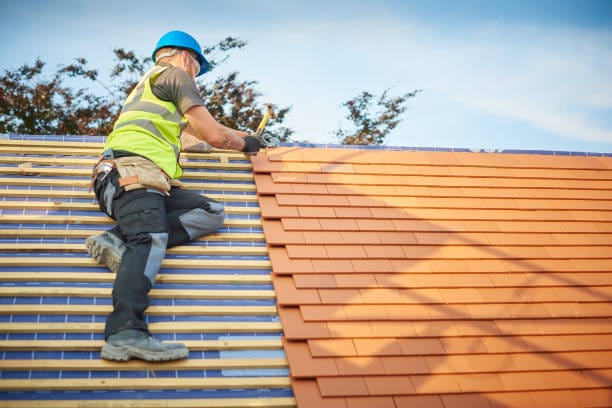A Roof Code Compliant protects your home, ensures safety, and prevents costly insurance issues. In Southern California, local building codes and the California Building Code (CBC) set strict rules on materials, installation, and ventilation. At Completed Home Improvements, we guide you through the essentials—so you can schedule upgrades or inspections with confidence.

1. Understand Local & State Roofing Codes
First, recognize that roofing codes operate at two levels:
- State Level (CBC): California’s Title 24 requires roofs to meet standards for wildfire resistance (Class A, B, or C), energy efficiency (cool roofs or insulation), and wind-uplift ratings.
- Local Jurisdictions: Cities like San Diego add height limits, historic district guidelines, and permit processes. Consequently, always check both CBC and your city’s building department before planning work.
Moreover, code updates occur every three years. Therefore, using a licensed contractor who stays current with the 2025 CBC and San Diego amendments is vital.
2. Verify Material Requirements
Next, choose roofing materials that match code classifications:
- Wildfire Ratings:
- Class A (highest protection) – typically includes concrete or clay tiles, metal panels, and certain treated wood shakes.
- Class B/C – fewer options and lower resistance.
- Energy Efficiency:
- Cool Roofs – have high Solar Reflectance Index (SRI) values to reduce heat gain.
- Built-Up Roofs – require adequate insulation (R-value) to meet Title 24 U-factor limits.
Furthermore, some cities mandate recycled content or solar-ready underlayment. A knowledgeable installer can recommend products that satisfy both state and local green building incentives.
3. Ensure Proper Installation Practices
Then, focus on installation details that codes specify:
- Underlayment & Flashing:
- Install two layers of underlayment for tile and metal roofs.
- Flash all roof penetrations (vents, chimneys) with code-rated metal or self-flashing assemblies.
- Fastening & Wind Uplift:
- Use nails or screws spaced per manufacturer and CBC specifications (often 6–8″ on center).
- In high-wind zones, choose enhanced clips or straps.
- Ventilation & Drainage:
- Provide ridge vents or soffit vents totaling at least 1 sq ft of net free area per 300 sq ft of attic floor.
- Ensure gutters and downspouts meet overflow requirements.
By following these steps, your roof will perform reliably and pass inspections without delays.
4. Obtain Permits & Schedule Inspections
In addition, do not skip permits:
- Permit Application: Submit roof plans, material specs, and contractor license information.
- Rough Inspection: The city checks underlayment, nailing, and ventilation before shingles or tiles go on.
- Final Inspection: After completion, an inspector verifies flashing, gutters, and overall workmanship.
Consequently, proper permitting avoids fines, project stoppages, and potential insurance claims down the road.
5. Maintain Compliance Over Time
Finally, code compliance isn’t a one-time task. Maintain your roof to preserve safety and efficiency:
- Annual Checks: Inspect for broken tiles, loose flashing, and clogged vents.
- Post-Storm Review: After heavy rain or wind, look for debris, leaks, or displaced shingles.
- Re-Certification: If you add solar panels, skylights, or a new roof deck, you may need a supplemental inspection.
Furthermore, keeping detailed maintenance records can speed future permit approvals and reinforce warranty coverage.
Frequently Asked Questions (FAQs)
Q: How often do roofing codes change in California?
A: The CBC updates every three years, with local amendments following shortly after. Always work with a contractor familiar with the latest 2025 code.
Q: What defines a “cool roof”?
A: Cool roofs have a high solar reflectance index (SRI ≥ 75). This reduces attic heat gain and lowers energy bills.
Q: Do I need a permit for minor roof repairs?
A: Most cities require permits for any work affecting more than 25 percent of the roof surface. Check with your building department.
Q: Can I install solar panels on a non-compliant roof?
A: No. Panels must mount on code-compliant underlayment and flashing. You may need roof upgrades before solar installation.
Q: What is the minimum attic ventilation rate?
A: Title 24 mandates at least 1 sq ft of net free vent area per 300 sq ft of attic floor. Combining ridge vents with soffits typically achieves this.
Conclusion
Ensuring your roof meets both CBC and local codes protects your home from fire, wind damage, and energy waste. By selecting proper materials, following precise installation practices, securing permits, and maintaining regular inspections, you achieve lasting code compliance—and peace of mind.
For expert guidance and professional roofing services in San Diego:
- Phone: +1 (619) 746-7871
- Email: help@completed-sd.com
- Website: www.completed-sd.com
Trust Completed Home Improvements to keep your roof—and your home—safe, efficient, and code-compliant.

